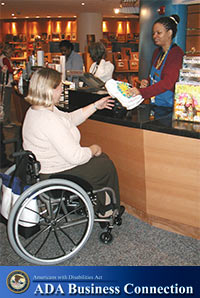Facts about Americans with Disabilities
The U.S. Census Bureau’s 2002 Survey of Income and Program Participation (SIPP) found that there are 51.2 million people with disabilities in the United States. More than one in six people in this country are potential customers for businesses that are accessible to people with disabilities. (9)
To put that number into perspective, the 2002 SIPP indicates that the U.S. population’s percentage of people with disabilities is 18.1 percent. (9) That is larger than the percentage of Hispanics in the U.S. population (13.3%), the country’s largest ethnic, racial, or cultural minority group. (12)
Each U.S. ethnic, racial, and cultural group has members with disabilities. The 2002 SIPP reported that at least 11.5% of each of these groups self-identified as having disabilities. For example, Black Americans reported 19.8%; Hispanics/Latinos reported 13.8%; Whites reported 19.0%; and, Asians or Pacific islanders reported 11.5%. (9)
Millions of people with disabilities regularly travel, shop, and eat out with family and friends. According to Census 2000, approximately 20.9 million families in this country have at least one member with a disability. (10)
The 2000 Census reported that almost 42% of older adults (65+ years) have one or more disabilities. (11) The Administration on Aging projects that by 2030 there will be more than 69 million people age 65 and older, making up approximately 20% of the total U.S. population. (1)
Information about the ADA and Business
For more information about how businesses can comply with the ADA and reach this nearly untapped market of people with disabilities, visit the U.S. Department of Justice’s ADA Business Connection site at archive.ada.gov. Or, call the toll-free ADA Information Line:
800-514-0301 (voice) or 833-610-1264 (TTY)


